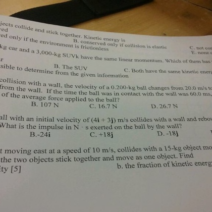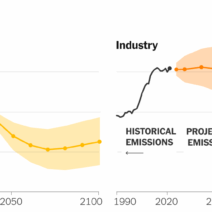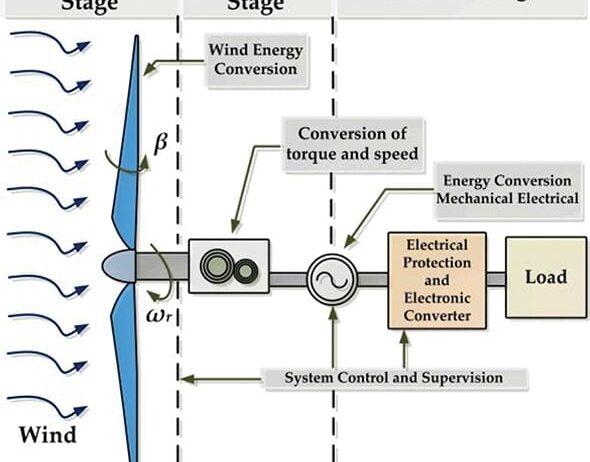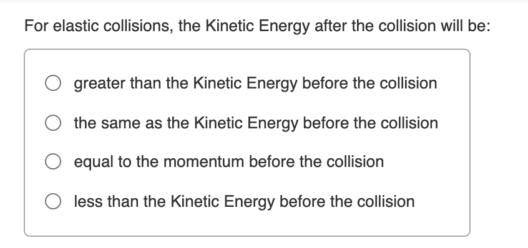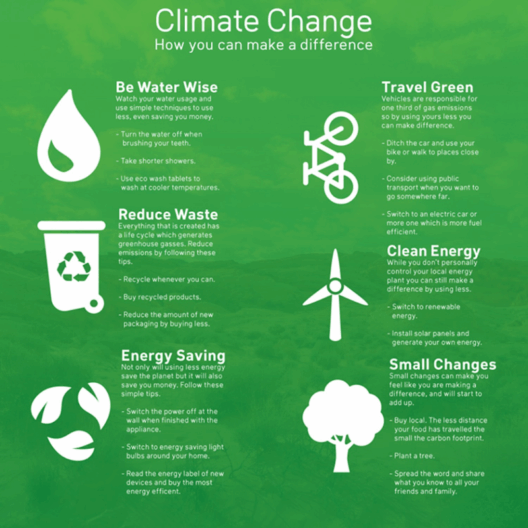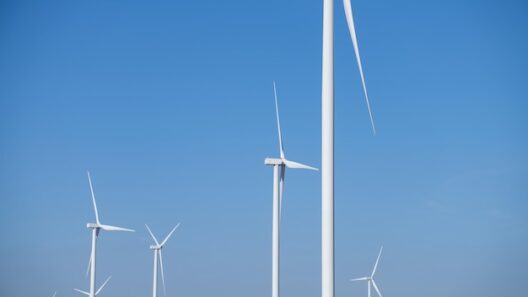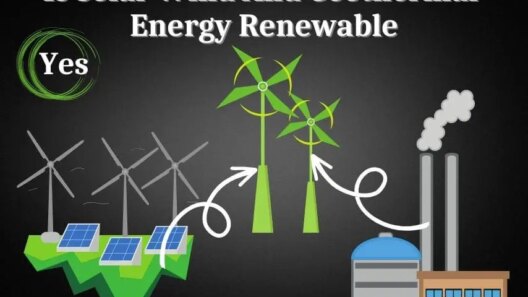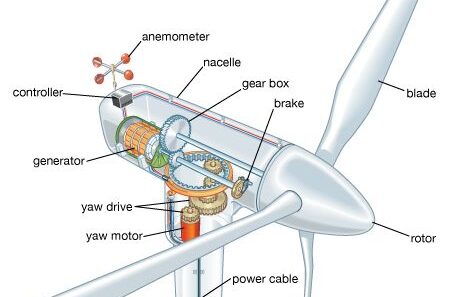Wind energy has emerged as a pivotal player in the contemporary discourse on renewable resources. Harnessing the natural power of moving air, wind energy transforms kinetic energy into electricity. This process not only exemplifies human ingenuity but also signals a significant advancement in our quest for sustainable power solutions. Understanding how wind energy is converted into electricity unveils a fascinating interplay of technology, ecology, and energy policy.
As we delve into the mechanics behind wind energy, it becomes crucial to contemplate both the potential and the challenges associated with this renewable resource. The methodology employed in converting wind into electrical power is intricate, intertwining physics, engineering, and environmental science.
Create Electricity from Nature’s Breath: The Mechanism Behind Wind Turbines
At the heart of wind energy generation are wind turbines, which serve as the conduits through which natural winds are transformed into usable electrical energy. The basic architecture of a wind turbine comprises three pivotal components: the rotor, the drivetrain, and the generator. As the wind flows past the blades of the rotor, which is constructed to maximize surface area and aerodynamic efficiency, its kinetic energy is captured. This interaction between the wind and the rotor blades initiates the energy conversion process.
When wind velocity reaches a sufficient threshold, the rotor begins to spin. This rotation is harnessed by the drivetrain—a complex assembly of gears and mechanisms designed to amplify the rotational speed. The efficacy of the drivetrain is essential; it not only enhances the energy extracted from the wind but also adapts to varying wind conditions. Finally, the generator, typically located within the nacelle atop the turbine’s tower, converts the mechanical energy from the spinning rotor into electrical energy through electromagnetic induction. This fundamental principle of physics, rooted in Faraday’s law, underscores the transformation of kinetic energy to electrical energy.
The advent of advanced turbine designs has heralded a new era in wind energy production. Modern turbines can generate electricity even at low speeds, thereby enhancing the overall efficiency of wind farms. Furthermore, they come equipped with sophisticated control systems that optimize energy production by adjusting the turbine’s orientation concerning wind direction and speed.
Wind Farms: The Collective Power of Many Turbines
Wind energy is often harnessed at a larger scale through wind farms. These installations can be found onshore and offshore, utilizing expansive spaces to maximize energy generation. Onshore wind farms are typically located in areas with consistent wind patterns, such as coastal regions or plains, while offshore farms capitalize on the stronger and more consistent winds found over open waters.
Building a wind farm involves meticulous planning and consideration of various environmental factors. The placement of turbines is paramount; it must account for topography, local wildlife, and existing land use. Moreover, wind farms not only produce electricity but also contribute to local economies by generating jobs in construction, maintenance, and operations. The carbon footprint associated with creating these wind farms is significantly lower than that of conventional fossil fuel power plants, reflecting the dual advantage of sustainability and economic viability.
The electricity generated at a wind farm is transmitted through a network of power lines to a grid, from where it can be distributed to homes and businesses. This integration into the electrical grid is vital for managing supply and demand dynamics. The intermittency of wind energy—its dependence on weather conditions—poses challenges that require careful grid management and storage solutions to ensure a stable supply of electricity.
Environmental Impact and Future Prospects: Embracing Wind Energy
The environmental benefits of wind energy cannot be overstated. Wind power generation emits no greenhouse gases during operation, thus playing a crucial role in mitigating climate change and reducing our reliance on fossil fuels. Additionally, the land used for wind farms can often still support agricultural activities, creating a symbiotic relationship between energy production and land use.
Nevertheless, operational wind farms are not without their environmental implications. Concerns regarding wildlife, particularly birds and bats, necessitate ongoing research and technological innovation to minimize adverse impacts. Advances in turbine design and placement strategies are critical in addressing these ecological challenges.
Looking towards the future, the wind energy sector is poised for significant growth. Technological advancements in turbine efficiency, energy storage systems, and grid integration are setting the stage for a more sustainable energy landscape. As investment in renewable energies escalates, there exists a burgeoning potential for wind energy to play a more dominant role in the global energy portfolio.
In conclusion, the conversion of wind into electrical power represents a remarkable synthesis of natural phenomena and technological ingenuity. Wind energy, with its many advantages and growing accessibility, offers a transformative path forward in our transition to cleaner and more sustainable energy sources. As society grapples with pressing environmental challenges, the promise of wind energy stands as a beacon of hope, igniting curiosity about our capacity to harmonize with nature’s forces while forging a sustainable future.
